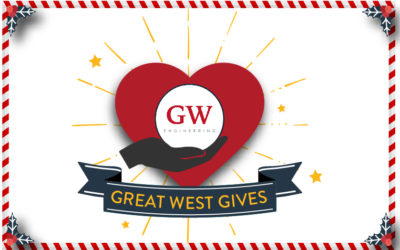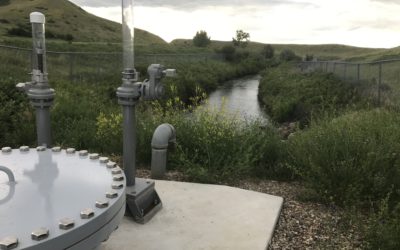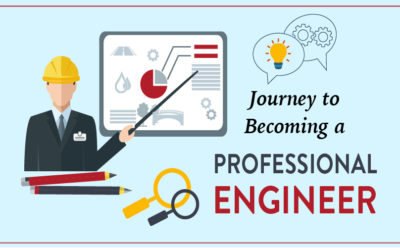What is a Water Model?
A hydraulic water model is a computer simulation of a water system. The water model is a powerful tool that can help to analyze an existing system as well as help to narrow down alternatives for future improvements and/or evaluate proposed developments or improvements. Through the help of specialized software, such as WaterCAD, a community’s water distribution system is modeled as a “network” and allows for nearly as many details you want to input into the system, including pipe material, pipe size, length of pipe, etc.





Water Model Usage: Analyze Condition of Existing System
The model can provide a big picture look at how a system should be functioning (i.e. how much water is available at fire hydrants, what system pressure, how to tank levels affect the system, etc.). Too often, however, a model is left at the theoretical level when it is actually much more important to get real results. One of the best ways to determine the accuracy of a water model is to calibrate it with hydrant testing. An ideal hydrant test would involve flowing one hydrant at a time while recording the available flow as well as the pressure not only of the flowing hydrant but also of several other hydrants throughout the system. A handful of hydrants should be tested throughout the community. These results are then compared to the original water model to determine how well the theoretical matches with the real results. There can be numerous reasons for differences. A common issue is excessively aged and/or scaled pipe, which can create additional headlosses in the system. Or, sometimes, the results may indicate a physical problem in the distribution system itself such as a closed or stuck valve. Regardless, the hydrant testing is important to calibrate the water model, which ensures that when looking at future analyses, the results are most accurate for the system.
Water Model Usage: Determine Available Fire Flows
One of the most common uses for water modeling at Great West is to help communities determine available fire flows for their water system. This is an important consideration for all communities but may be most significant for small systems as fire flow demands are typically much larger than their projected customer demands and as a result drive the overall size of the system. Water modeling can not only identify fire flow deficiencies for a system but can also be used to evaluate alternatives to improve fire flow as part of future fire flow improvements. The model can help determine which pipes need to be upsized and to what size. The model can also be used to help prioritize improvements by determining which improvements will have the most significant hydraulic benefits to the system.
Water Model Usage: Analyze System Pressures
A hydraulic water model helps to evaluate system pressures. Determining where pressures may be deficient and under what conditions (i.e. with a particularly pump running or not running, or when tank levels drop, etc.). The model can determine where pressure zones may need to be added or modified. Similarly, it can help to determine what elevations of new tanks should be.
Water Model Usage: Determine System Adequacy for New Development
Another common benefit to water modeling is to evaluate impacts on the system from proposed developments and/or connections to the system. Can an existing system handle a new connection at the proposed location? If not, what improvements can be done to the existing system to make the new connection acceptable? All of these questions can be answered with an accurate water model.
Water Model Usage: Prioritize Improvements and Save Money
In addition to looking at the existing system, the water model has a function which allows the user to add alternatives right into the system. The model of the existing system remains in tact while the user can make changes to the system in separate “scenarios” to simulate what the results of various improvements may be (i.e. upsizing a pipeline, looping the distribution system, adding a pressure zone, etc.). With input from the client as to what the desired end results are, the model can help to identify the most economical improvements that will provide the best end result for any particular system.
Water Model Usage: Is it Time for an Updated Water Model of Your System?
How well do you understand your distribution system? Do you have a long term plan to improve your system? Can a hydraulic water model help you develop a more cost effective replacement plan?
A little extra time and money invested in a properly developed water model can be the difference in completing cost effective, phased improvements that are improving the overall system versus wasting large sums of money doing improvements that are not going to help meet the desired end results.
Article by Crystal Bennett, PE


Have Questions?
LATEST NEWS
Yearly ROSE Award Winners
At Great West Engineering, we take pride in recognizing the dedication and hard work of our team. Each year, the Recognition of Special Effort (ROSE) award honors employees who go above and beyond—those who step up, make a difference, and inspire those around them....
Why Transportation Planning Matters
Transportation planning is the collaborative process of evaluating the current state of a transportation network at a local, state, or regional level, identifying future transportation needs, and outlining implementation and funding strategies to align with...
Holiday Spirit in Action – Great West’s Commitment to Giving
As the holiday season approaches, one of the highlights is our fundraising efforts to support local families in need. Since 2015, this has been an annual tradition at Great West Engineering, and it’s truly heartwarming to see our staff come together to contribute to...
Company News
Updates and News From Great WestHow Communities Can Prepare for Changes in Land Uses
The unique lessons we recall as we age play a significant role in guiding our decisions and actions. I have a story that portrays this well, about a pair of rusty pruning shears. My first job as a horticulturist and native landscaper taught me a crucial lesson of tool...
Summer 2024 ROSE Award Winners
We are thrilled to announce this year’s Helena office summer ROSE (Recognition of Special Effort) award winners! Presented at our annual summer picnic, the ROSE is a special honor voted on by peers, celebrating those who consistently go the extra mile. Meet our...
Andrew Kimmel Selected for Second Term on APWA’s Certification Commission
We are pleased to announce that Andrew Kimmel has been selected to serve a second term on the Certification Commission for the American Public Works Association (APWA). Andrew has been actively involved with APWA's national committees and commissions for the past 8...
2024 Premier Award for Client Satisfaction
PSMJ Resources, Inc. has announced Great West Engineering as a winner of the 2024 Premier Award for Client Satisfaction! The Premier Award for Client Satisfaction honors architecture and engineering firms that deliver a truly exceptional client experience. The award...
2024 Employer of Choice Award
Great West Engineering has been recognized as one of the top firms in the industry, securing a place in the prestigious 2024 AEC Employer of Choice Award. This accolade, presented by PSMJ Resources, Inc., highlights the company's commitment to creating a workplace...
Summer Interns 2024
As the school year comes to an end and summer begins, we are excited to pass our knowledge and experience to the next generation of leaders in the engineering industry. One of our most cherished core values is ensuring that our employees feel empowered, and this...
Importance of Grant Administration
At Great West Engineering, we've been making a positive impact on communities for over three decades. We've successfully completed thousands of infrastructure projects by utilizing state and federal grants and low-interest loans. Our comprehensive professional...
Preserving and Conserving the Resource at Hill County’s Beaver Creek Reservoir
Located approximately 10 miles south of Havre in Hill County, Beaver Creek Reservoir (also known as “First Lake”) is one of two reservoirs within Beaver Creek Park. The dam, constructed of earth fill, is over 100 feet tall and stores more than 6,000 acre-feet of...
Ki-Ai Pierson Promoted to Funding Manager
Great West Engineering is pleased to announce the appointment of Ki-Ai Pierson as Funding Manager. As Funding Manager, Ki-Ai will work to offset project costs by securing competitive grants and other funding for Great West’s clients. Ki-Ai leads a team of funding...
Journey to Becoming a Professional Engineer
The engineering profession is a challenging and rewarding career. If you ask any one person why they decided to become an engineer, you will hear many different reasons and stories. My engineering journey started by chance. I knew I enjoyed science and math and...












